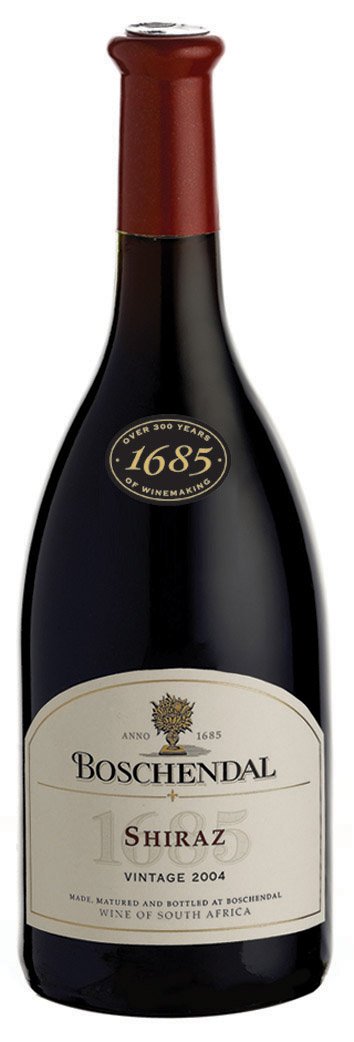Shiraz / Syrah Wine Information
Shiraz and Syrah are both names for the same red wine grape. This grape is most definitely NOT the same as Petit Sirah, a different red wine grape grown mostly in California.The Shiraz / Syrah grape is called Syrah in the US, France and many countries. In Australia it is called Shiraz, where it is considered the finest red wine grown there. Shiraz is certainly the most widely planted red grape in Australia. Now that Shiraz has become well known and popular, some wineries in the US who are making an "Austrlian style wine" with this grape are calling their wines Shiraz as well.
The Shiraz grape was once thought to have originated in Persia, but recent research indicates the grape is a native of the Rhone valley, in France. Yes, there is a town in the middle east named Shiraz that has made wine for centuries. However, that town is NOT where the Shiraz grape came from.
Until recent times, shiraz was best known for its usage in Hermitage, in the Rhone valley. Now Shiraz has taken off as a variety in its own right, bottled as a straight Shiraz wine.
Shiraz is known for its spicy blackberry, plum, and peppery flavors. Often there are additional notes of licorice, bitter chocolate and mocha. Shiraz is even affected by growing temperature - warmer climates bring out the mellower flavors of plum, while cooler temperatures spice up the wine. Shiraz can be made in a fruity style, which many "sweet" wine drinkers enjoy. It can also be made in a dry style.
Shiraz can be drunk immediately, but can also be aged for up to 5 years depending on how tannic it is.
The name Shiraz
The name Shiraz
It is called Syrah in its country of origin, France, as well as in the rest of Europe, Argentina, Chile, Uruguay and most of the United States. The name Shiraz became popular for this grape variety in Australia, where it has long been established as the most grown dark-skinned variety. In Australia it was also commonly called Hermitage up to the late 1980s, but since that name is also a French Protected designation of origin, this naming practice caused a problem in some export markets and was dropped. The name Shiraz for this grape variety is also commonly used in South Africa and Canada.
The grape is also known under many other synonyms that are used in various parts of the world including Antourenein Noir, Balsamina, Candive, Entournerein, Hignin Noir, Marsanne Noir, Schiras, Sirac, Syra, Syrac, Serine, and Sereine.[8]
It seems that many of the legends of Syrah's origins come from one of its many synonyms - Shiraz.[9] Since there also is a city in Iran called Shiraz, where the famous Shirazi wine was produced[10], some legends have claimed that the Syrah grape originated in Shiraz, and was brought to Rhône, which would make Syrah a local French synonym and Shiraz the proper name of the variety.
There are at least two significantly different versions of the myth, giving different accounts of how the variety is supposed to have been brought from Shiraz to Rhône and differing up to 1,800 years in dating this event. In one version, the Phocaeans should have brought Syrah/Shiraz to their colony around Marseilles (then known as Massilia), which was founded around 600 BC. The grape should then later have made its way to northern Rhône, which was never colonized by the Phocaeans. No documentary evidence exists to back up this legend, and it also requires that the variety later has vanished from the Marseilles region without leaving any trace.[7]
In another version, the person who brought the variety to Rhône is even named, being the crusader Gaspard de Stérimberg, who is supposed to have built the chapel at Hermitage.[7] Even before the advent of DNA typing of grapes, there were several problems with this legend. First, no ampelographic investigations of the grapes from Shiraz seem to have been made. Second, it is documented that the famous Shirazi wine was white,[10] ruling out the use of dark-skinned grapes such as Syrah, and no known descriptions of this wine's taste and character indicate any similarity whatsoever with red wines from the Rhône. Third, it is highly doubtful if any crusader would have journeyed as far east as Persia, since the crusades were focused on the Holy Land.
The legend connecting Syrah with the city of Shiraz in Iran may, however, be of French origin. James Busby wrote in Journal of a recent visit to the principal vineyards of Spain and France that the 1826 bookŒnologie Française "stated that, according to the tradition of the neighbourhood, the plant [Scyras] was originally brought from Shiraz in Persia, by one of the hermits of the mountain".[11]
Since the name Shiraz has been used primarily in Australia in modern time, while the earliest Australian documents use the spelling "Scyras", it has been speculated (among others by Jancis Robinson[8]) that the name Shiraz is in fact a so-called "strinization" of Syrah's name via Scyras. However, while the names Shiraz and Hermitage gradually seem to have replaced Scyras in Australia from the mid-19th century, the spelling Shiraz has also been documented in British sources back to at least the 1830s.[11][12][13] So, while the name or spelling Shiraz may be an effect of the English language on a French name, there is no evidence that it actually originated in Australia, although it was definitely the Australian usage and the Australian wines that made the use of this name popular.
http://en.wikipedia.org/wiki/Syrah#The_name_Shiraz
http://en.wikipedia.org/wiki/Syrah#The_name_Shiraz




.jpg)
0 comments:
Post a Comment